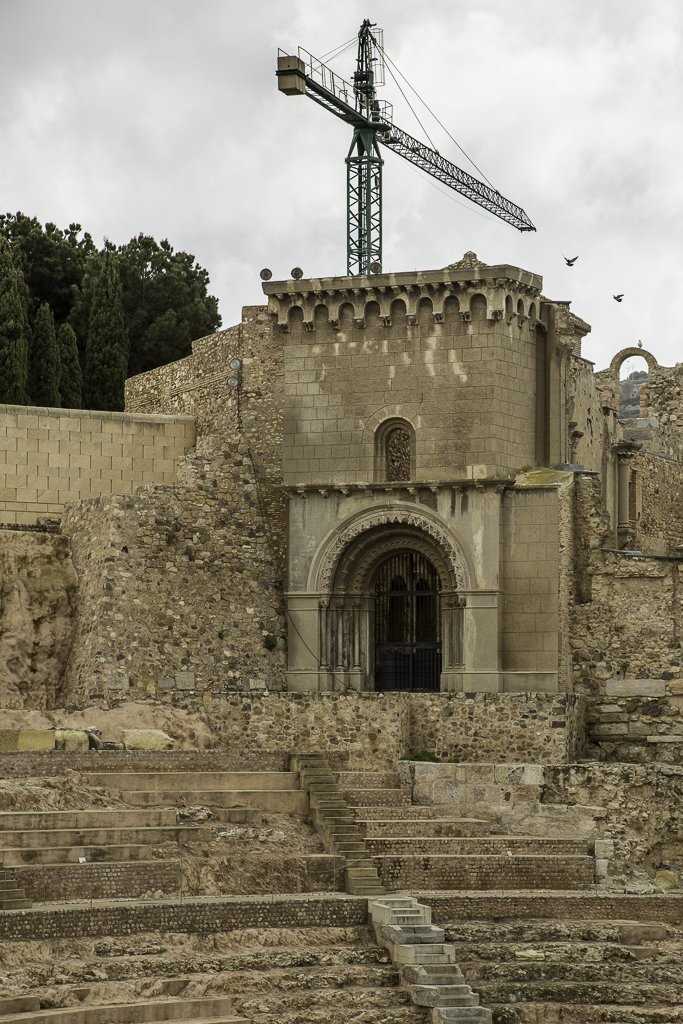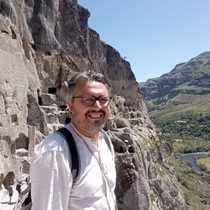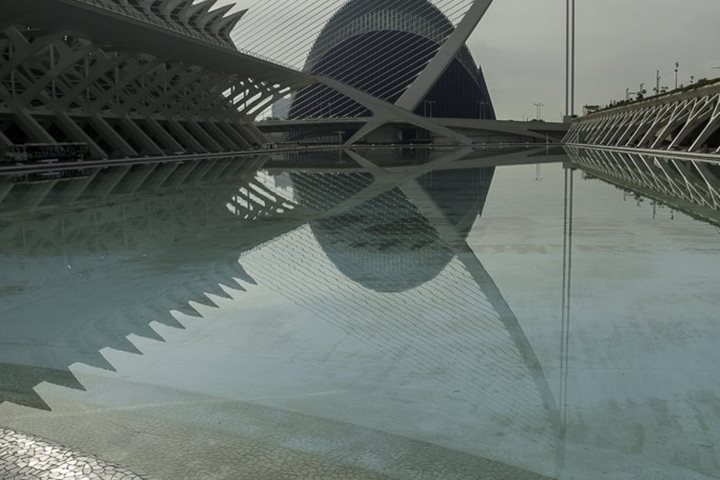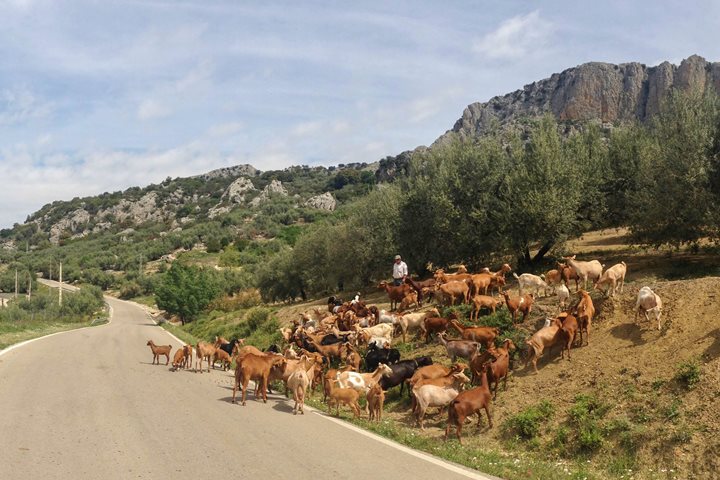Wind was constant, intense and uncomfortable early on the morning when National Geographic Orion approached the Gulf of Mazarron. On the shoreline, people in the coastal villages were already hurrying towards the greenhouses populating the gentle slopes of the Morenas Mountain Range for a new busy day farming the vegetables and fruits that most Europeans will eat in the following days. At sea, National Geographic Orion slowed down to 6 knots to follow the bending edge of the continental platform at the Mazarron escarpment, a dramatic underwater cliff-like structure diving 1.5 miles into the Algero-Balearic abyssal plain. There, we expected to watch the large sea mammals that followed Mazarron escarpment on their migratory routes along the Southern Spanish coast. Unfortunately, the rough conditions of the sea prevented any cetacean sighting. Nevertheless, we were fortunate enough to observe the dorsal fin of a lazy sunfish (Mola mola) emerging from the water, drifting with the rolling waves.
Next we enjoyed Madalena’s spicy conference on the products brought to Europe by the Age of Discoveries. We entered Cartagena Bay at lunch time. The natural harbour that for centuries has been the large stronghold of the Spanish Navy in the Mediterranean was still quite imposing. Surrounded by five hills, each one with a heavily armed fortress on the top, Cartagena has never being taken from the sea. Now the navy facilities were less evident than few years ago, and a new modern pier was awaiting for us at a walking distance from the city centre.
Most of National Geographic Orion’s explorers preferred to visit Cartagena’s old city centre either walking, biking or riding a Segway, while some others went to ARQUA, the Spanish National Museum of Underwater Archaeology, erected in 2008 on the very same harbour. City explorers enjoyed superb views of Cartagena from the top of Castle of Conception, an old Moorish alcazaba and later naval fortress that now can be easily visited thanks to a panoramic lift. Back in the city centre they explored the remains of the Roman Theatre, a massive structure recently recovered with a capacity of 6000 spectators. This impressive archaeological site is one of the best testimonials of the importance of Cartagena on the ancient antiquity, the other being the ship remains exhibited in the Underwater Archaeological Museum.
Ivan Negueruela awaited us at the hall of ARQUA. The present director of the National Museum was also the discoverer of the Mazarron II shipwreck, the oldest of its type found in the Mediterranean, a Phoenician ship sunk 2700 years ago in front of Mazarron. Ivan showed his passion as he guided us through the exhibition sharing his personal experiences as a young underwater archaeologist confronted with the discovery of his life. Technical details and personal anecdotes enriched his explanations about the discovery of Phoenician ships. He also shared with us his experiences on the legal trial to recover the Mercedes treasure, several thousands of gold and silver coins collected by treasure hunters from the wreck of La Mercedes, a frigate sunk on a fight against the Royal Navy in front of the Southern Portuguese Coast. Now most of the treasure is preserved under the vaults of the strong rooms of ARQUA, after the Supreme Court of Florida dictated that the treasure should be returned to Spain. Some coins however are exhibited in the permanent exhibition of the Museum.
Back to National Geographic Orion, we departed from Cartagena before sunset. After dinner and on our way to Valencia, Javier gave a lecture about the birds of the Albufera, the coastal lagoon and Natural Park that awaited us the following day.







